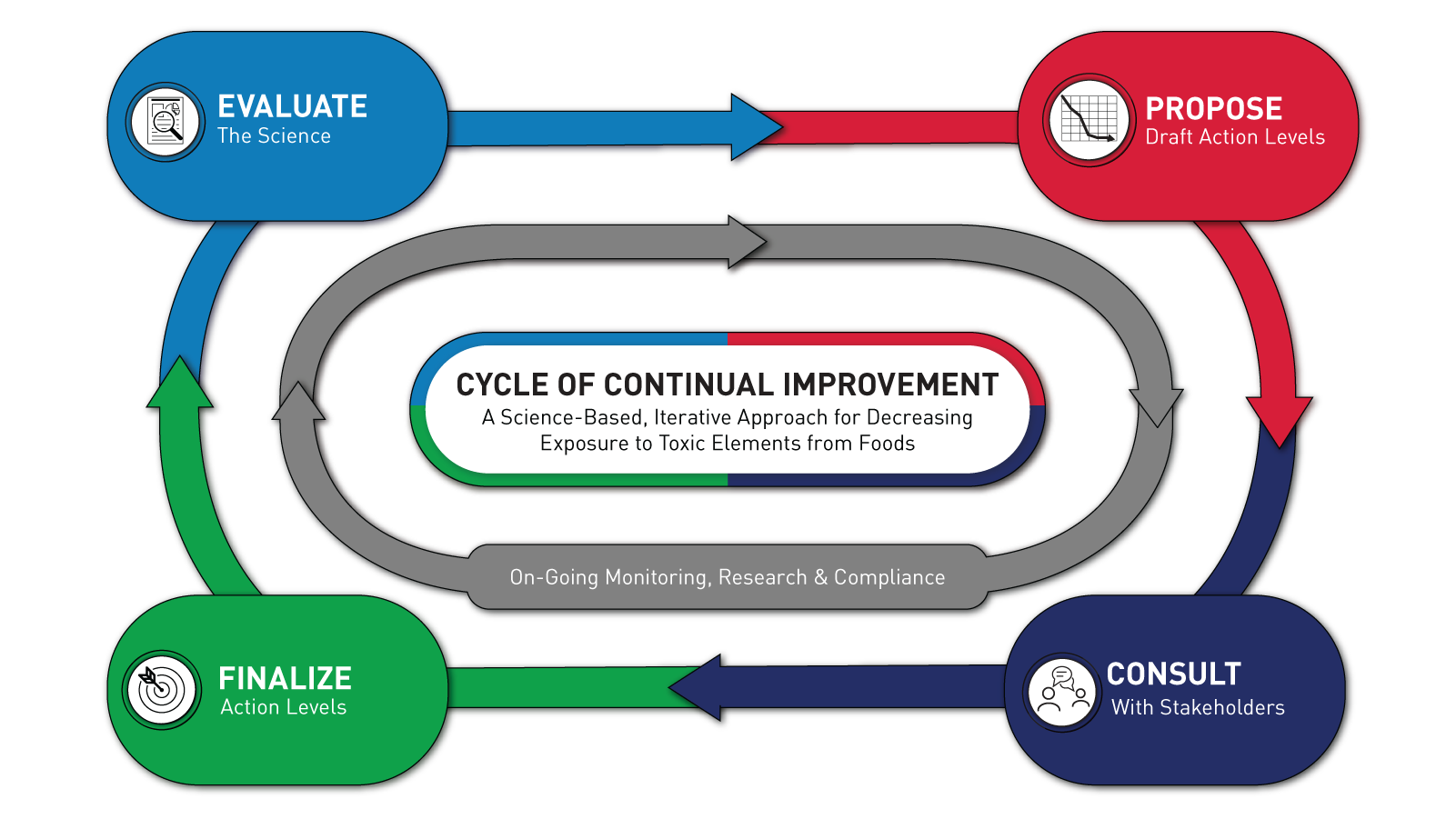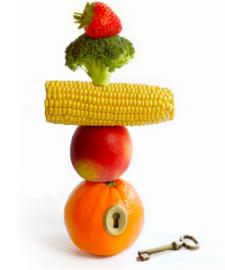FDA Shares Action Plan for Reducing Exposure to Toxic Elements from Foods for Babies and Young Children
Constituent Update
April 8, 2021
Today the U.S. Food and Drug Administration (FDA) announced “Closer to Zero”—the agency’s action plan for reducing exposure to toxic elements, including lead, arsenic, cadmium, and mercury, from foods for babies and young children. Our plan describes the approach we will take to help continually reduce toxic elements to the lowest levels possible in foods eaten by babies and young children.
Reducing exposure to toxic elements—especially for babies and children—is one of the FDA’s highest priorities. Our goal of moving us closer to zero exposure to toxic elements from foods reflects our commitment to take significant steps to help reduce contamination. However, because fruits, vegetables, and grains can ‘take up’ toxic elements in the environment from the water, soil, and air, there are limits to how low the levels can be reduced. Exposure to toxic elements depends on the levels of the elements found in foods as well as the amount of the food consumed.
It is crucial to ensure that measures to limit toxic elements in foods do not have unintended consequences—like limiting access to foods that have significant nutritional benefits by making them unavailable or unaffordable for many families. There is also the potential of unintentionally increasing the presence of one toxic element when foods are reformulated to reduce the presence of another. By taking into consideration issues related to feasibility and achievability, the FDA can help to ensure equitable availability of safe and nutritious foods for all babies and young children.
Our data indicate that FDA actions, in partnership with industry, have led to significant progress in reducing children’s exposure to lead and arsenic from foods. To further advance our work in this area, we will use a science-based, iterative approach for decreasing exposure to toxic elements from foods using a cycle of continual improvement. Throughout this process, we are committed to transparency and engagement with stakeholders, including the food industry, advocacy groups, federal partners, academia, and other stakeholders in this effort.
Action levels are levels set by the FDA to provide guidance to industry and FDA field staff. They are a level of contamination at which a food may be regarded as adulterated within the meaning of section 402(a)(1) of the Federal Food, Drug, and Cosmetic Act. The agency considers action levels, in addition to other factors, when considering whether to take compliance or enforcement action in a particular case. Action levels can be lowered over time as appropriate.
The FDA will focus on:
- advancing research and evaluating changes in dietary exposures to toxic elements,
- setting action levels with input from stakeholders, and
- encouraging industry to adopt best practices to lower levels of toxic elements in agricultural commodities and products.
We will also increase targeted compliance and enforcement activities and monitor the progress of levels over time.
Our action plan outlines the four stages of our iterative science-based approach for continual improvement and the timeframe for completing action items in three phases.
During the first year (Phase 1), we are committed to:
- proposing action levels for lead in categories of foods consumed by babies and young children,
- consulting with and gathering data from stakeholders and federal partners on issues such as feasibility and best practices,
- evaluating the science related to arsenic exposure from foods,
- sharing resources with industry on best practices for reducing or preventing lead contamination, and
- completing updated sampling assignments that will look at toxic element levels in baby foods.
The subsequent phases of this plan will include addressing additional toxic elements such as cadmium and mercury. As new data, information, and resources become available, we will continue the cycle of continual improvement, addressing each toxic element in its turn.
For full details on our approach and future action items, please read the action plan.
Reminders for Parents, Caregivers, and Consumers
FDA testing shows that children are not at an immediate health risk from exposure to toxic elements in foods.
Research has shown that reducing exposure to toxic elements is important to minimizing any potential long-term effects on the developing brains of infants and children.
The FDA routinely monitors levels of toxic elements in food. If we find that they pose a health risk, we take steps to remove those foods from the market.
As a reminder for parents and caregivers:
- It’s always a good idea to speak with your child’s pediatrician about a diet that includes a variety of age-appropriate, healthy foods that provide needed nutrients. For example, babies over six months old need food that contains iron (such as iron-fortified grain cereals) for proper growth and development. The American Academy of Pediatrics has detailed advice for feeding infants and young children.
- You do not need to throw out packaged baby foods or stop feeding certain foods to your babies and children. Eliminating entire food groups from your children’s diet may result in nutrient deficiencies and potential poor health outcomes. A varied diet is best.
- Making your own baby foods is not likely to reduce your baby’s risk of exposure to toxic elements in food. It may actually result in higher concentrations of toxic elements. Compared to a single consumer, food manufacturers have more capability to implement strategies that lead to using ingredients with lower concentrations of toxic elements.
- Please do NOT attempt to make homemade infant formula to feed your baby. It is extremely unlikely to reduce exposure to toxic elements and has resulted in infants suffering life-threatening consequences, including severe nutritional deficiencies and microbial foodborne illness.
Additional Resources
- Closer to Zero: Action Plan for Baby Foods
- FDA Infographic: Trends in Exposure to Toxic Elements from Foods for Babies and Young Children
- FDA Infographic: The Key to a Well-Balanced Diet is Eating a Variety of Healthy Foods
- What You Can Do to Limit Exposure to Arsenic
- For Consumers: Seven Things Pregnant Women and Parents Need to Know About Arsenic in Rice and Rice Cereal
- Metals and Your Food



